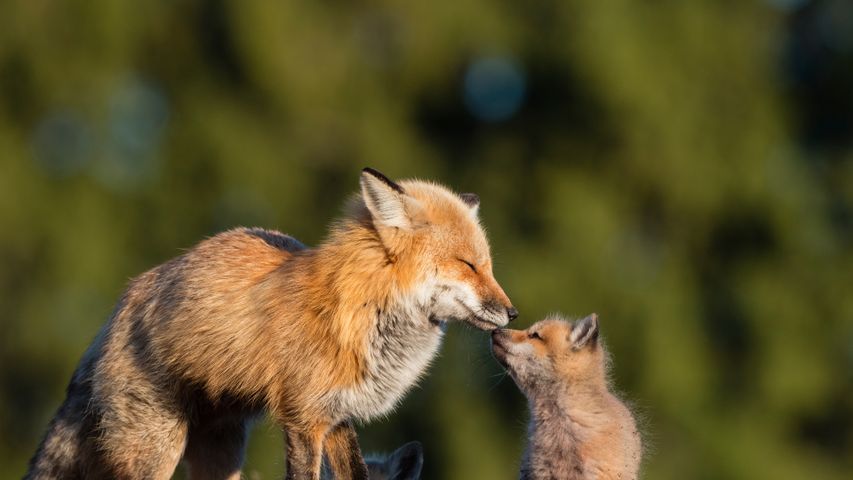Red fox
© Yossi Eshbol/Minden Picture
Meet an expert on the dog days of summer. Dog days of summer
Other than maybe our pet dogs, no other canine species has succeeded more at living among humans than the fox. This is despite the fact that people have hunted them for sport and for their highly coveted fur, and generally regarded them as pests and nemeses. No matter how we feel about them, foxes seem to have earned our respect. Of all the animals that are arguably clever and crafty, the word we use is ‘outfoxed,’ not ‘outcrowed,’ or ‘outbeared,’ or ‘outraccooned.’
The cunning fox is an appropriate poster pup for the ‘dog days’ of summer, which start today and end in 40 days on August 11. These long, hot, languid days of summer are associated with the ‘dog star,’ Sirius, the brightest star in the night sky and the predominant star of the constellation Canis Major. The ‘dog days’ begin when Sirius rises—that is, when the star first becomes visible above the eastern horizon—at least in the Northern Hemisphere. In the Southern Hemisphere, the appearance of Sirius marked the start of winter for Polynesians, who used it as a lodestar to navigate the ocean. For those of us up north, Sirius and the ‘dog days,’ simply mean keeping cool while enjoying the warmth and bounty of the longest days of the year. Foxes typically spend their summers parenting their offspring, called kits, and readying them for the fall when they will stake out on their own.
True to their reputation, foxes are among the most adaptable and resourceful of animals. They live all over the world, in forests, grasslands, deserts, mountains, and even the Arctic. They eat primarily small rodents, but are opportunistic omnivores known to feed on reptiles, birds, insects, fruit, and roots. They are also expert scavengers and thieves when it comes to food. Perhaps the reason they’re adept at living among people is because they’re a lot like us.
Related Images
Bing Today Images






 Leopard mother grooming her cub, Jao Reserve, Botswana
Leopard mother grooming her cub, Jao Reserve, Botswana
 Red fox cubs near their den
Red fox cubs near their den
 Baby giant panda in the snow, China
Baby giant panda in the snow, China
 A lion sleeping in Ishasha Sector, Queen Elizabeth National Park, Uganda
A lion sleeping in Ishasha Sector, Queen Elizabeth National Park, Uganda
 Polar bear cub, Churchill, Manitoba, Canada
Polar bear cub, Churchill, Manitoba, Canada
 Vancouver Coastal Sea wolves in Great Bear Rainforest, British Columbia, Canada
Vancouver Coastal Sea wolves in Great Bear Rainforest, British Columbia, Canada
 Polar bear with cub, Churchill, Manitoba, Canada
Polar bear with cub, Churchill, Manitoba, Canada
 Red fox mother kissing her baby in Canada
Red fox mother kissing her baby in Canada